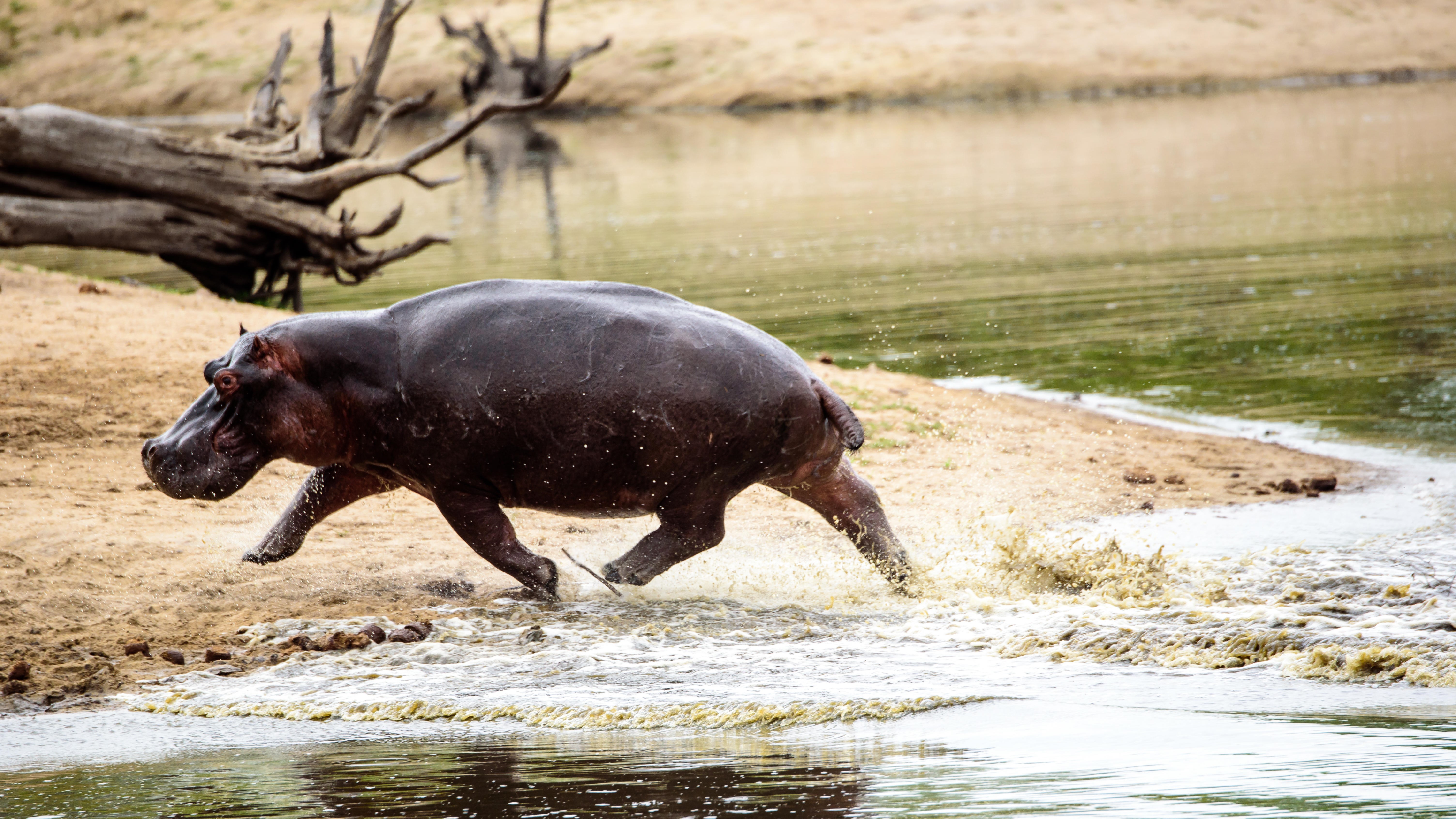Trotting hippos can 'fly,' but only in 0.3-second bursts, study finds
Researchers have discovered that, unlike other four-legged mammals, hippopotamuses trot at high speeds and become airborne for "quite a large amount of time."

Hippos weigh as much as a medium-size car, but that doesn't stop them from completely lifting off the ground when hitting top speeds, new research has found. Turns out, these bulky creatures can go airborne for "quite a large amount of time," scientists say.
The finding comes from the first ever study on hippo locomotion, published July 3 in the journal PeerJ. The researchers revealed that the common hippopotamus (Hippopotamus amphibius) uses a two-beat gait called a trot, in which diagonal limbs move forward at the same time. That's different from some other four-legged animals like elephants, which walk using a four-beat gait with the sequence left hind foot forward, followed by left front, right hind and then right front.
"Hippos basically only trot," study lead author John Hutchinson, a professor of evolutionary biomechanics at the Royal Veterinary College in the U.K., told Live Science. "And what's neat about that is that they do that throughout their whole speed range, as far as we can tell, which is unusual for animals."
Other animals, such as horses and rhinos, transition from a trot to a canter or gallop, which involve an aerial phase. But hippos prefer to trot even at high speeds of 15.5 mph (25 km/h), while also going airborne in between strides, Hutchinson said. The creatures can lift off the ground for 0.3 seconds at a time, which is "quite a large amount of time" when you consider that hippos take up to three strides per second, Hutchinson said.
Related: Is hippo milk really pink?
To examine hippo movement, Hutchinson and his colleagues analyzed footage of two animals they recorded at a zoo in England and 30 more animals documented on YouTube. "If you click through a video of a hippo moving frame by frame, and this is something we were excited to see, you do notice that yeah, wow, they're going airborne and staying airborne," he said.
This means hippos have greater athletic capabilities than elephants, which do not become airborne, Hutchinson said. Going airborne probably enables the limbs to act like springs and store elastic energy in the tendons, giving hippos a bouncing gait that is more efficient and potentially faster than staying on the ground, he said.
Sign up for the Live Science daily newsletter now
Get the world’s most fascinating discoveries delivered straight to your inbox.
Another airborne hippo sighting!It's raining hippos all of a sudden! https://t.co/1HMKoYxiEQJuly 13, 2024
But lifting off has its downsides. The movement puts strain on the limbs and exerts the muscles, and it also means hippos can't react to their surroundings during the 0.3 seconds they are in the air. "When you're off the ground, you can't control what's going on," Hutchinson said. "It's risky to go airborne."
Lots of animals go airborne when moving at full speed, but they are rarely trotting when doing so because of the strain it puts on their limbs, Hutchinson said. Hippos may have evolved to trot because they have short limbs and wide bodies, which would become unstable if they used a gait that shifts weight onto just one side of the body, he said. Trotting spreads the weight evenly on both sides.
Scientists still don't know a lot of things about hippo locomotion, such as the animals' maximum speed. Hippos are difficult to study because there aren't many of them in captivity and because they spend most of their time in the water, where they use another type of locomotion called punting, Hutchinson said. (Punting is more like a gallop and involves hippos pushing themselves along the ground with their hind feet.) But this kind of research is important to understand the animals' evolution and to provide them with adequate veterinary care, he said.

Sascha is a U.K.-based staff writer at Live Science. She holds a bachelor’s degree in biology from the University of Southampton in England and a master’s degree in science communication from Imperial College London. Her work has appeared in The Guardian and the health website Zoe. Besides writing, she enjoys playing tennis, bread-making and browsing second-hand shops for hidden gems.









